|
|
|

Dido and Aeneas during the hunting in the morning, Turner
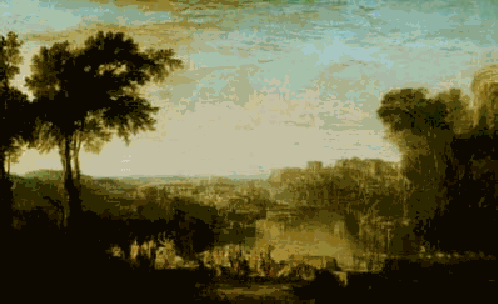 Dido and Aeneas during the hunting in the morning, 1814, J. W. Turner - National Gallery, London
Joseph William Turner
Joseph Mallord William Turner was an English landscape painter who is renowned especially for his dynamic treatment of natural light effects in land and marine subjects. His work is of direct importance in the development of impressionism
Turner was born in London on April 23, 1775, and educated at the Royal Academy of Arts. At the age of 15 he exhibited his paintings at the academy and continued to show his work there until 1850. He was elected an associate of the academy in 1799 and a full member three years later. He travelled widely throughout his career, extensively touring England and Scotland and later France, Switzerland, and Italy. In 1807 he became professor of perspective at the Royal Academy and in 1845 was appointed deputy professor. Turner's early paintings were predominantly watercolours and his subjects mostly landscapes. By the late 1790s he had started exhibiting his first oil paintings, eventually transferring to the oils the same vibrancy of colour that had proved so successful in his watercolours. His mature work falls into three periods. During the first period (1800-20) Turner painted many pictures with mythological and historical scenes in which the colouring was subdued and details and contours were emphasized. He was influenced by the 17th-century French landscape painter Claude Lorrain, notably in the use of atmospheric effects, as in The Sun Rising Through Vapour (1807, National Gallery, London), and in the treatment of architectural forms, as in Dido Building Carthage (1815, National Gallery). Turner also produced numerous engravings for his unfinished collection Liber Studiorum (1806-19). The paintings of the artist's second period (1820-35) are characterized by more brilliant colouring and by diffusion of light. In two of Turner's best works, Bay of Baiae (1823, National Gallery) and Ulysses Deriding Polyphemus (1829, National Gallery), his use of light lends radiance to the colours and softens architectural and topographical forms and shadows. During this period he also executed a number of illustrations for books on topography and a collection of watercolours depicting Venetian scenes. Turner died on December 19th 1851.
J. M. W. Turner dominated British landscape painting during the first half of the nineteenth century. His dramatic, almost restless watercolors and oil paintings investigate the variable effects of light and atmosphere with an innovative, virtuoso technique that frequently borders on abstraction. Turner visited Venice on at least three occasions; the city's luminous atmosphere and dreamlike ambiance provided one of his favorite landscape subjects.
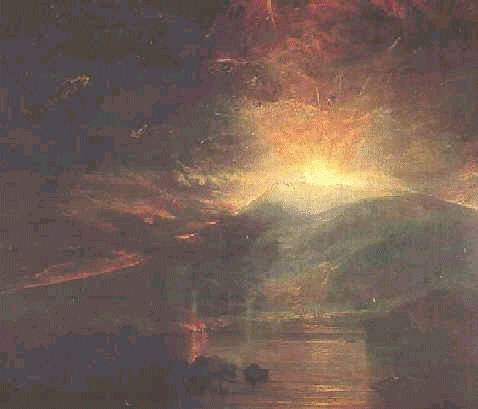
 Firenze da S.Miniato al Monte - British Museum
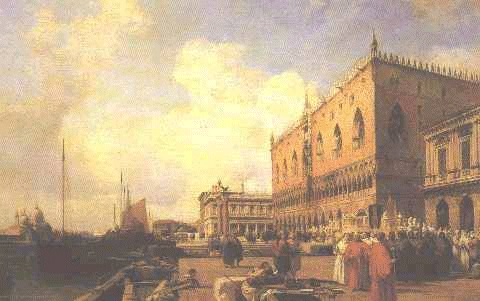 Venezia, palazzo ducale con processione religiosa - Tate Gallery
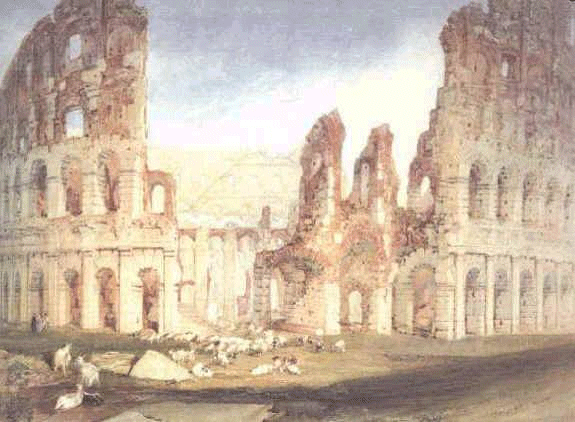 Colosseo, Roma, acquerello - British Museum
I castelli Inglesi
 Kenilworth Castle, Warwickshire - Fine arts Museum of San Francisco
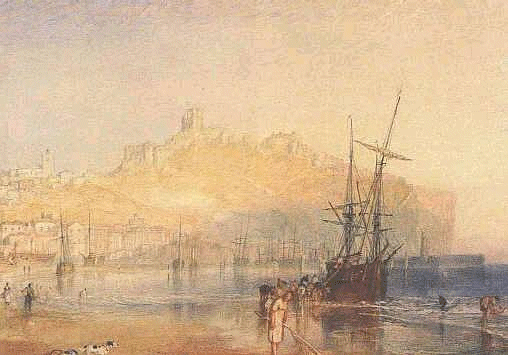 Scarborough, acquerello su matita - Tate Gallery
 Norham Castle, alba, 1844, oil on canvas, 91 x 122 cm - Tate Gallery
 Alba con barca tra promontori, Tate Gallery
|
|
|